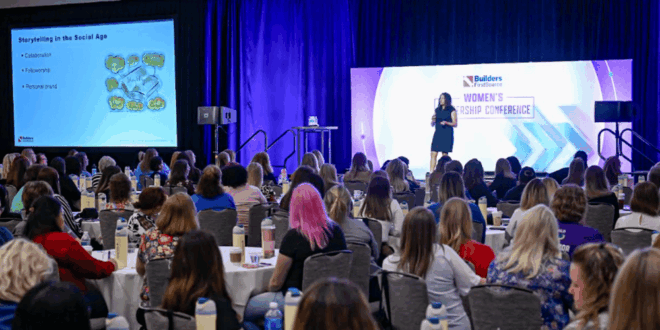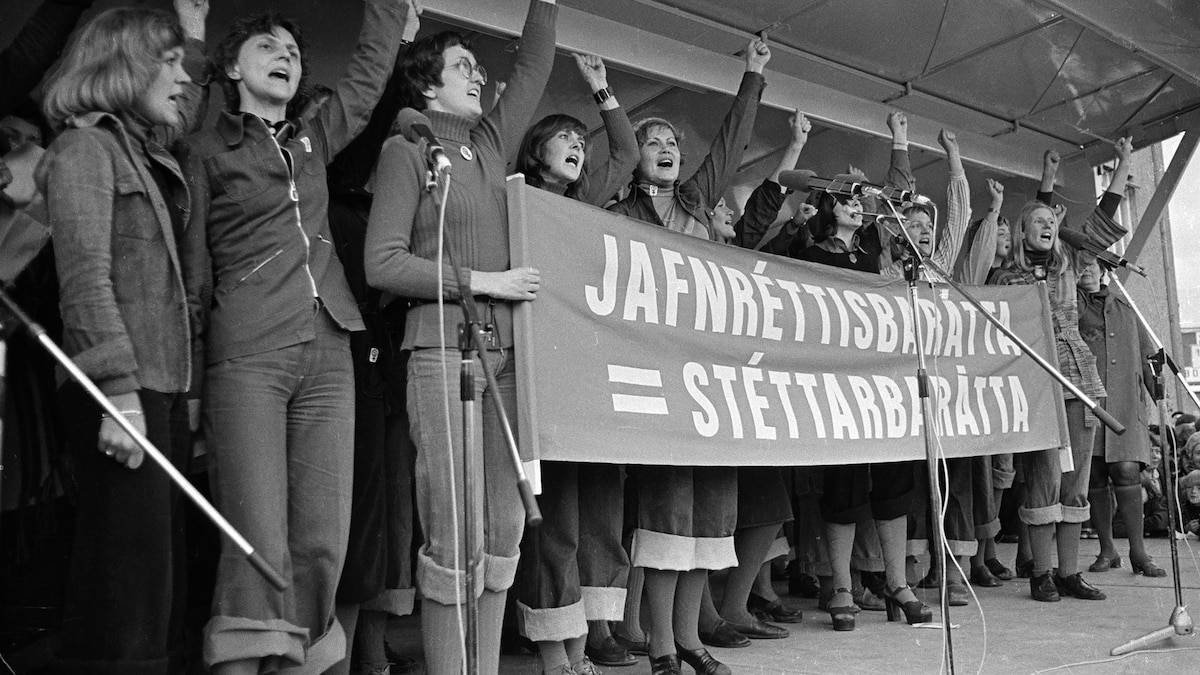Report on the 2025 IASC Global Workshop on Protection from Sexual Exploitation, Abuse, and Sexual Harassment (PSEAH)
Introduction and Context
The 2025 Inter-Agency Standing Committee (IASC) Global Workshop on PSEAH convened 155 participants from 35 nations between September 15-18, 2025. The hybrid event brought together a multi-stakeholder coalition including UN agencies, NGO consortia, the Red Cross/Red Crescent movement, and donor partners. The primary objective was to assess progress and define future priorities for the IASC PSEAH Strategy, directly contributing to the achievement of the Sustainable Development Goals (SDGs), particularly those concerning justice, gender equality, and global partnerships.
Key Discussions and Alignment with Sustainable Development Goals
The workshop’s ten sessions focused on integrating PSEAH efforts into broader humanitarian action, with significant implications for the 2030 Agenda for Sustainable Development.
Advancing SDG 5 (Gender Equality) and SDG 10 (Reduced Inequalities)
- Victim/Survivor-Centered Approaches: Discussions emphasized holistic support for victims and survivors, a critical component of achieving gender equality and empowering women and girls (Target 5.2).
- Integration with Protection Frameworks: The need to integrate PSEAH with Gender-Based Violence (GBV) and child protection efforts was highlighted, creating a more comprehensive approach to ending all forms of violence against vulnerable populations (Target 5.2, 16.2).
- Investment in Localization: A key theme was the strategic investment in Women-Led Organizations (WLOs), recognizing their crucial role in community-based protection and advancing gender equality from the ground up (Target 5.5).
Strengthening SDG 16 (Peace, Justice, and Strong Institutions)
- Accountability and Trust: Participants addressed the need to strengthen accountability frameworks and build trust in reporting mechanisms to combat impunity and ensure justice for victims (Target 16.6).
- Coordination Mechanisms: The workshop explored opportunities to improve coordination and harmonize approaches across agencies, thereby building more effective, accountable, and inclusive institutions at all levels (Target 16.6).
- Systemic Change: A shared recognition emerged that efforts must move beyond compliance to address the systemic causes of sexual exploitation and abuse, fostering a culture of prevention and accountability within humanitarian operations.
Fostering SDG 17 (Partnerships for the Goals)
- Multi-Stakeholder Collaboration: The event itself exemplified SDG 17, gathering diverse actors to exchange knowledge and share good practices.
- Sustainable Funding Models: Donor partners reaffirmed that PSEAH is a core, non-optional component of programming. Discussions focused on mainstreaming PSEAH across funding cycles and adopting unified costing methodologies to ensure sustainable, collective resourcing (Target 17.1).
- Collective Resources: The value of leveraging collective inter-agency resources, such as the PSEA Capacity project, was emphasized as a means to enhance efficiency and impact through partnership (Target 17.16).
Strategic Priorities for SDG Advancement
Based on the workshop outcomes and the IASC Principals’ June 2025 commitment, the following priority areas were identified to accelerate the implementation of the PSEAH Strategy and related SDGs:
- Sustainability: Secure sustainable funding and embed PSEAH into all proposals and budgets as a core humanitarian responsibility.
- Coordination and Efficiency: Optimize existing tools and harmonize approaches to maximize impact amid shrinking humanitarian budgets.
- Risk Management: Conduct in-depth analysis and discussion on PSEAH-related risk management across all operations.
- Accountability: Strengthen investigation processes and accountability mechanisms to ensure they are robust, transparent, and victim-centered.
Conclusion
The 2025 IASC Global Workshop concluded with a renewed commitment to advancing the PSEAH agenda as a fundamental prerequisite for achieving the Sustainable Development Goals. While acknowledging progress, participants agreed on the urgent need for concerted action to address systemic issues and strengthen accountability. The defined priorities will guide the IASC and the incoming PSEAH Champion in accelerating progress, with a formal review scheduled for February 2026 to measure advancements against these critical global commitments.
SDGs Addressed in the Article
SDG 5: Gender Equality
- The article’s central theme is the protection from sexual exploitation, abuse, and sexual harassment (PSEAH). These are forms of gender-based violence (GBV), which directly relates to SDG 5’s mission to achieve gender equality. The text explicitly mentions the need to integrate “PSEAH with GBV” efforts and highlights investment in “Women-Led Organizations (WLOs),” reinforcing the focus on empowering women and eliminating violence against them.
SDG 16: Peace, Justice and Strong Institutions
- The article addresses the need for accountability, justice for victims, and effective institutions to manage and prevent sexual misconduct. It emphasizes strengthening “reporting mechanisms,” conducting “investigations,” and ensuring “accountability.” These elements are fundamental to building peaceful, just, and inclusive societies with effective and transparent institutions, as outlined in SDG 16. The focus on integrating PSEAH with “child protection efforts” also connects directly to this goal.
SDG 17: Partnerships for the Goals
- The article describes a global workshop that brought together a wide range of stakeholders, including “155 participants from 35 countries,” “15 UN agencies, NGO consortia, the Red Cross/Red Crescent movement,” and “donor partners.” This collaborative approach to “exchange knowledge, share good practices,” and “harmonize approaches across agencies” exemplifies the multi-stakeholder partnerships essential for achieving the SDGs, as promoted by SDG 17. The call to strengthen “collaboration with governments, NGOs and commercial partners” further underscores this connection.
Specific SDG Targets Identified
Targets under SDG 5 (Gender Equality)
-
Target 5.2: Eliminate all forms of violence against all women and girls in the public and private spheres, including trafficking and sexual and other types of exploitation.
- The article is entirely focused on preventing and responding to “Sexual Exploitation, Abuse, and Sexual Harassment (PSEAH),” which are explicit forms of violence and exploitation targeted by this goal. The workshop’s purpose is to assess progress and identify gaps in the strategy to combat these issues within the humanitarian sector.
-
Target 5.c: Adopt and strengthen sound policies and enforceable legislation for the promotion of gender equality and the empowerment of all women and girls at all levels.
- The discussion revolves around the “IASC PSEAH Strategy,” developing “coordination mechanisms,” and creating “unified costing methodologies.” These are all examples of strengthening policies and institutional frameworks to promote gender equality and protect women and girls.
Targets under SDG 16 (Peace, Justice and Strong Institutions)
-
Target 16.2: End abuse, exploitation, trafficking and all forms of violence against and torture of children.
- The article explicitly states the need for “integrating PSEAH with GBV and child protection efforts,” directly aligning with the goal of ending violence and exploitation against children.
-
Target 16.6: Develop effective, accountable and transparent institutions at all levels.
- The workshop’s objective to “strengthen accountability” and “build trust in reporting mechanisms” within humanitarian organizations (UN agencies, NGOs) is a direct effort to make these institutions more effective, accountable, and transparent in their duty to protect vulnerable populations.
Targets under SDG 17 (Partnerships for the Goals)
-
Target 17.16: Enhance the Global Partnership for Sustainable Development, complemented by multi-stakeholder partnerships that mobilize and share knowledge, expertise…
- The workshop itself, as a “platform to assess progress,” “exchange knowledge, share good practices, and reflect on lessons learned” among diverse global actors, is a clear manifestation of this target.
-
Target 17.17: Encourage and promote effective public, public-private and civil society partnerships…
- The article highlights the need to “strengthen collaboration with governments, NGOs and commercial partners” and leverage “collective inter-agency resources,” which directly corresponds to promoting effective partnerships across different sectors.
Indicators Mentioned or Implied
Indicators for SDG 5
- Funding allocated to PSEAH and WLOs: The article implies a need to measure progress through financial commitments. It notes that “PSEA is a core component… and must be embedded in proposals and budgets” and calls for “investing in Women-Led Organizations (WLOs).” Tracking these financial flows serves as an indicator of commitment.
- Integration of PSEAH into protection frameworks: Progress can be measured by the extent to which PSEAH is integrated with “GBV and child protection efforts,” as mentioned in the article. This indicates a more holistic and effective policy approach.
Indicators for SDG 16
- Trust in and effectiveness of reporting mechanisms: The article points to the need to “build trust in reporting mechanisms” and strengthen “accountability.” An implied indicator would be the rate of reporting and the number of “investigations” conducted, which would measure the functionality and trustworthiness of institutional justice systems.
- Availability of victim/survivor support: The focus on “victim/survivor support” implies that the availability and accessibility of these services can be used as an indicator to measure progress in providing access to justice and assistance for victims of violence.
Indicators for SDG 17
- Number and diversity of participating stakeholders: The article provides concrete numbers: “155 participants from 35 countries,” including “15 UN agencies, NGO consortia, the Red Cross/Red Crescent movement,” and donors. This data serves as a direct indicator of the scale and scope of the multi-stakeholder partnership.
- Level of resource mobilization and harmonization: The discussion on “collective resourcing in high-risk contexts,” “unified costing methodologies,” and leveraging “collective inter-agency resources” implies that progress can be measured by the degree to which partners pool resources and harmonize their approaches for greater efficiency.
Summary Table of SDGs, Targets, and Indicators
| SDGs | Targets | Indicators (Implied from Article) |
|---|---|---|
| SDG 5: Gender Equality | 5.2: Eliminate all forms of violence against all women and girls… including sexual and other types of exploitation. | Level of integration of PSEAH with broader GBV and child protection efforts. |
| SDG 5: Gender Equality | 5.c: Adopt and strengthen sound policies and enforceable legislation for the promotion of gender equality… | Amount of sustainable funding embedded in humanitarian proposals and budgets for PSEAH; Level of investment in Women-Led Organizations (WLOs). |
| SDG 16: Peace, Justice and Strong Institutions | 16.2: End abuse, exploitation, trafficking and all forms of violence against… children. | Extent of integration of PSEAH with child protection frameworks and initiatives. |
| SDG 16: Peace, Justice and Strong Institutions | 16.6: Develop effective, accountable and transparent institutions at all levels. | Level of trust in reporting mechanisms; Number of investigations conducted; Availability and accessibility of victim/survivor support services. |
| SDG 17: Partnerships for the Goals | 17.16: Enhance the Global Partnership… complemented by multi-stakeholder partnerships that mobilize and share knowledge… | Number and diversity of stakeholders (countries, UN agencies, NGOs) participating in collaborative platforms like the global workshop. |
| SDG 17: Partnerships for the Goals | 17.17: Encourage and promote effective public, public-private and civil society partnerships… | Degree of collective resourcing and use of harmonized approaches (e.g., unified costing methodologies) among partner agencies. |
Source: reliefweb.int







